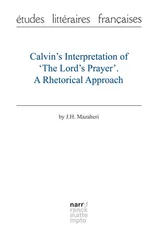I’ve put that text into footnotes (Xitsa).
VT43 prefers the one-word reading aselye.
so in VT43
VT43 agrees with me in reading á hyame.
VT43 argues that hanmeans "beyond".
VT43 takes i ëa han ëaas meaning "who is beyond Eä", which would certainly not be a direct translation of "who is in heaven". If this is the correct interpretation, it is still surprising that the second ëais not capitalized as Eäor Ëa, to identify it as a proper name.
In VT43, the ending - deis suggested to be an allomorph of the locative ending - sse, or its shorter version - se. Tolkien may seem to be toying with a system that has this ending appearing as - zeor - defollowing certain consonants, like - nand - l. This phonological development does not agree very well with the system he uses elsewhere, though: cemen+ - sewould be expected to yield cemesserather than cemende.
VT43 takes it for granted that the simplex is Eruman.
VT43 does not consider the possibility of a subject-less construction; na care indómelyais apparently taken as a kind of imperative: "Do thy [own!] will!" rather than "let thy will be done".
Earlier versions of the Quenya Ave Maria here uses the instrumental case instead: VT43:26, 27.
However, VT43 cites examples of Quenya prepositions that do take pronominal endings. The mystery of why sfails to become rremains, though.
See the entry rámenin the Etymological analysis for further discussion.
According to VT43:18, Tolkien derived apsenefrom sen"let loose, free, let go" supplied with a somewhat obscure prefix aba-, becoming ap- when the syncope brought binto contact with p.
In VT43, cemendeis interpreted as cemen+ - se, the latter element being a short locative ending which turns into - ze> - defollowing n. As I point out elsewhere, this development seems pretty ad hoc; normally nswould be expected to turn into a double ss, not nd.
If as elyeshould really read aselyein one word, the emphatic pronoun elyedoes not after all occur in this text.
the prefixed i- in this case may reflect the stem-vowel of ni 2- I , LR:378
VT43:14 quotes han= "beyond" from a very late (ca. 1970) manuscript.
In VT43 it is argued that i ëa han ëameans "who is beyond Eä", which would indeed be a circumlocution. The fact that hanappears with the meaning "beyond" in a manuscript 15-20 years younger than the Lord’s Prayer text cannot be seen as conclusive regarding its meaning here. However, a variant version of the prayer used the word pellainstead, a well-known Quenya word for "beyond". This suggests that "who is beyond Eä" may indeed be the intended meaning here.
According to VT43:16, Tolkien in a note dating from 1957 derived indómefrom in-i-d "mind, inner thought" and defined it as "settled character, also used of the will of Eru".
VT43 argues that - deis simply an allomorph of - sse.
VT43:23 presents some thoughts about possible etymologies of mal, for instance that it could be a short ablative of má"hand" and therefore signifying "away from one hand" = "on the other hand". I do not think I am insulting anyone if I say this is extremely speculative, but I can offer no really plausible etymology myself.
And now VT43:23 adds yet other words for "but": one, on, ono, anat.
The assumption that omentielvoincludes a dual form of "our" is based on information from Humphrey Carpenter’s edited version of Tolkien’s letters, but it is unclear whether this was a lasting idea, or indeed whether or not Carpenter may have misunderstood whatever manuscript he had before him. There are apparently late manuscripts in which omentielvois explained as containing an inclusive "our" rather than a dual ending.
According to VT43:24, sieappears as an adverb "thus" in one late manuscript, ca. 1968. Whether this is relevant for the obviously much earlier Lord’s Prayer manuscript cannot be determined, but sie= "thus" would also make sense in the context.
Or perhaps rather ná- sie= "[this] is so", if we accept the gloss of sieas "thus"; the meaning remains the same.
VT43:33 suggests that rá- is derived from ara along side , and analyzes rámenas rá"for" + men"us". As the authors of the article ought to know and indeed write elsewhere, menis a dative form "for us", not simply "us". The prefix rá- still seems superfluous as long as the dative ending is attached to the pronoun. It is possible, though, that ráas a preposition "for" or "on behalf of" governs the dative case, much like ú"without" governs the genitive case. If so, the "prefix" ráis actually a preposition rather than a prefix proper, though a pronoun has glued itself to it. An earlier version of the Quenya Ave Maria actually had the two-word reading rá men: VT43:27. Perhaps, then, we could also have phrases like * rá i Eldan"on behalf of the Elf".
VT43 confirms that the full form of the word is síve.
Interestingly, it now turns out that some earlier versions of the prayer actually had ulcalloinstead of ulcullo.
I think my reasoning as such was sound, but according to VT43:24, the simplex may after all be ulcowith a stem-form ulcu-. At least there is one version of the prayer that had va ulcoinstead of ulcullo, this vaapparently being a preposition "from" that was used instead of the ablative ending - llo.
If ulcullois actually ulcowith stem ulcu-, it is a quite rare formation, especially for a word that is to have an abstract meaning. Ulco, ulcu- presupposes a form * ulkuin early Common Eldarin.
Читать дальше












